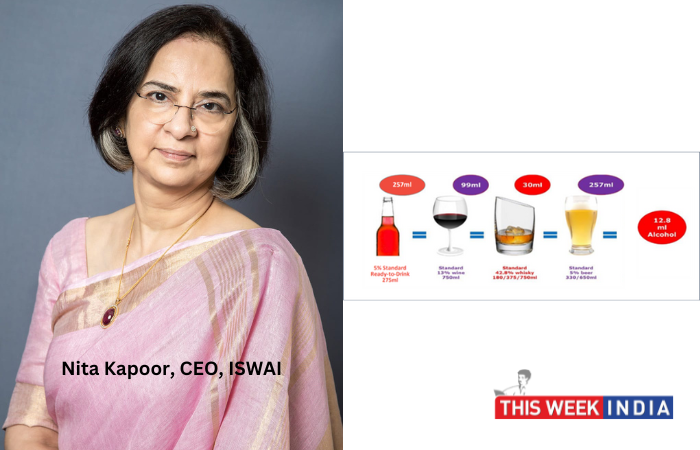Bangalore May 22, 2024: In a bid to debunk pervasive myths surrounding alcohol consumption, the International Spirits & Wines Association of India (ISWAI), the apex body of the premium AlcoBev sector, is strongly advocating for uniform alcohol guidelines in India. ISWAI emphasizes the need to recognize that alcohol is alcohol, irrespective of its form.
Highlighting a prevalent misconception among consumers, Ms. Nita Kapoor, CEO, ISWAI said, “Many consumers believe that distilled spirits are inherently ‘stronger’ and more intoxicating than beer or wine, regardless of the quantity consumed. But the reality is different. The alcohol in all drinks containing alcohol is the same, and it has the same effect on the body. There is no drink of moderation, but only a practice of moderation.”
From a public health perspective, Ms. Kapoor underscored the dangers of perpetuating such myths and said, “If consumers underestimate the effects of drinking beer or wine, this could result in harmful consumption. Some state governments reinforce this misperception through policies and regulations that discriminate against distilled spirits and give preferential treatment to beer or wine.”
For instance, the state of Haryana, in its excise policy of 2023-24, allowed corporate offices with a staff of at least 5,000 and a minimum covered area of 100,000 sq. ft to consume low-alcoholic drinks like beer, wine, or spirits within the office premises. Another example is the state of UP which, while acknowledging in its excise policy of 2024-25 that ‘law and order situations often arise due to consumption of beer here and there, and (hence) for the solution of the same, the facility of consumption for beer shops will be allowed by the District Excise Officer after the approval of the District Magistrate after receiving the online application form, but for this, a minimum of 100 Square feet separate premises (permit room) within a radius of 20 meters of the shop should be available. For the permit room facility, a fee of Rs. 5,000/- will be charged for the financial year or any part of the financial year. The canteen facility will not be allowed in the permit room.
Source: FSSAI
Another misperception that the standard serving of beer, RTDs (Ready-to-Drink), or wine has less alcohol than distilled spirits comes from the fact that they have a lower ‘alcohol content’ or alcohol by volume (ABV) listed on the containers in which they are sold. ABV is a measure of how much alcohol is contained as a percentage of the whole container. The alcohol in a bottle of beer, wine, or RTD is more diluted than it is in a bottle of spirits. However, standard serve sizes always contain the same amount of alcohol, which takes into account the ABV. The number of standards served in a bottle of beer, wine, and distilled spirits will differ.
Clarifying this myth, Ms Kapoor said, “What matters is how much alcohol is consumed and not what type of alcohol is consumed. Over 30 countries have moderate or low-risk drinking guidelines. Such guidelines make no distinction between alcohol consumed as beer, wine, or spirits; rather they reference standard serving of alcohol or standard units.”
Standard serving sizes vary between different countries, but the most typical standard serving is defined as 10g of alcohol. Using the 10g definition of a standard serve, a 99ml glass of wine at 13 per cent ABV, a 30ml measure of spirits at 42.8 per cent ABV, or a 257ml glass of beer at 5 per cent ABV all contain the same amount of alcohol
Ms Kapoor concluded by urging states to address these misconceptions. She said, “ISWAI advocates for guidelines that recognise alcohol as alcohol, irrespective of its form and emphasises the need for comprehensive regulatory frameworks that ensure and promote responsible drinking practices”.
Debunking myths surrounding alcohol consumption is essential for informed decision-making and promoting public health. By understanding the truth about beer, wine, and spirits, individuals can make responsible choices, while policymakers can implement evidence-based policies that prioritise public well-being.









